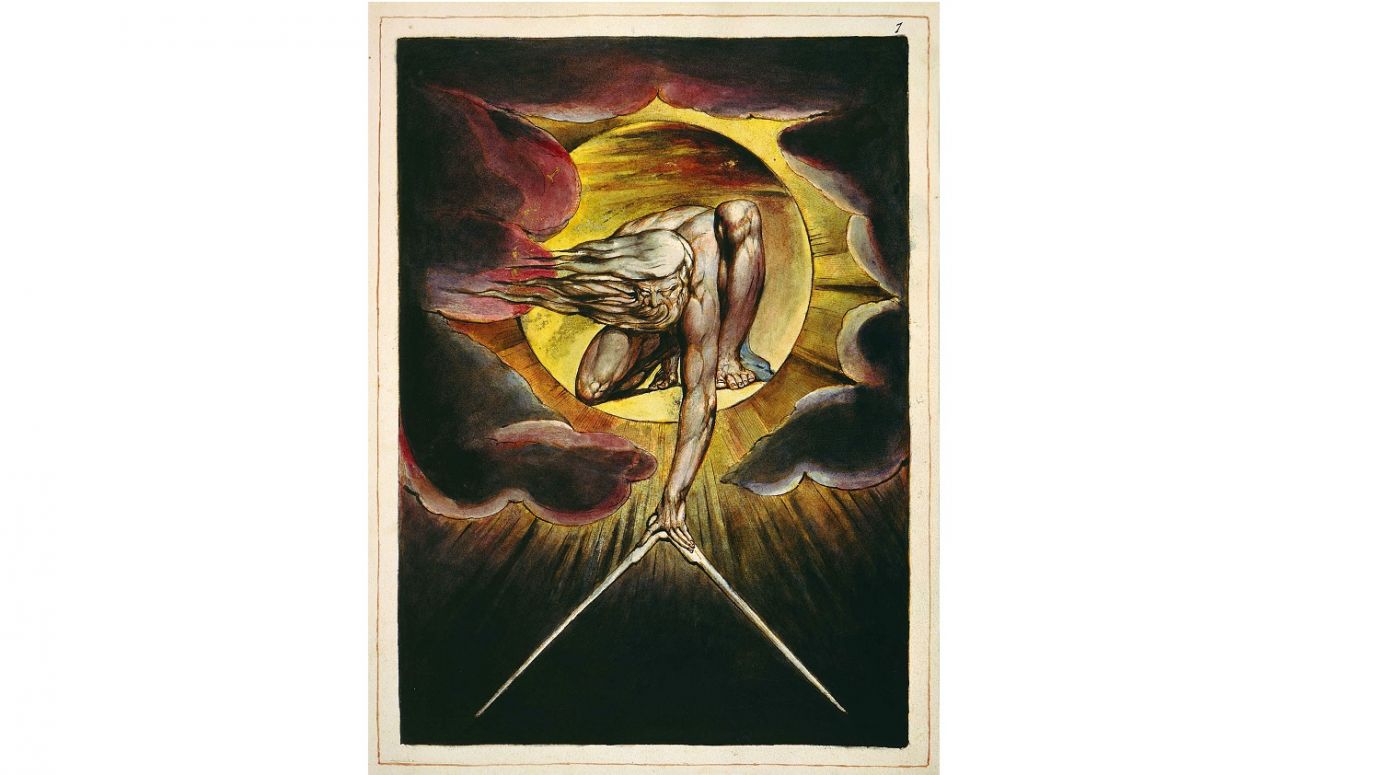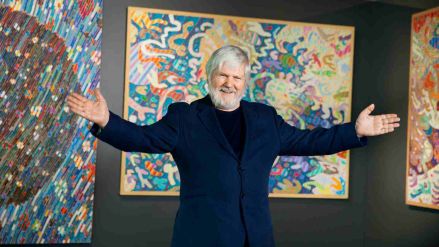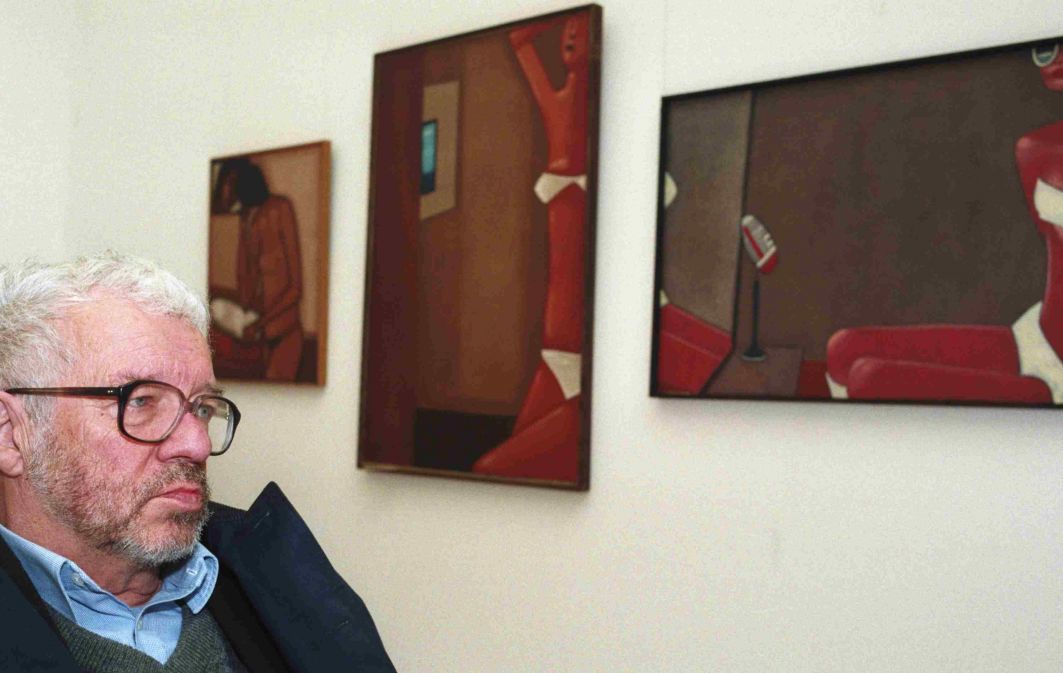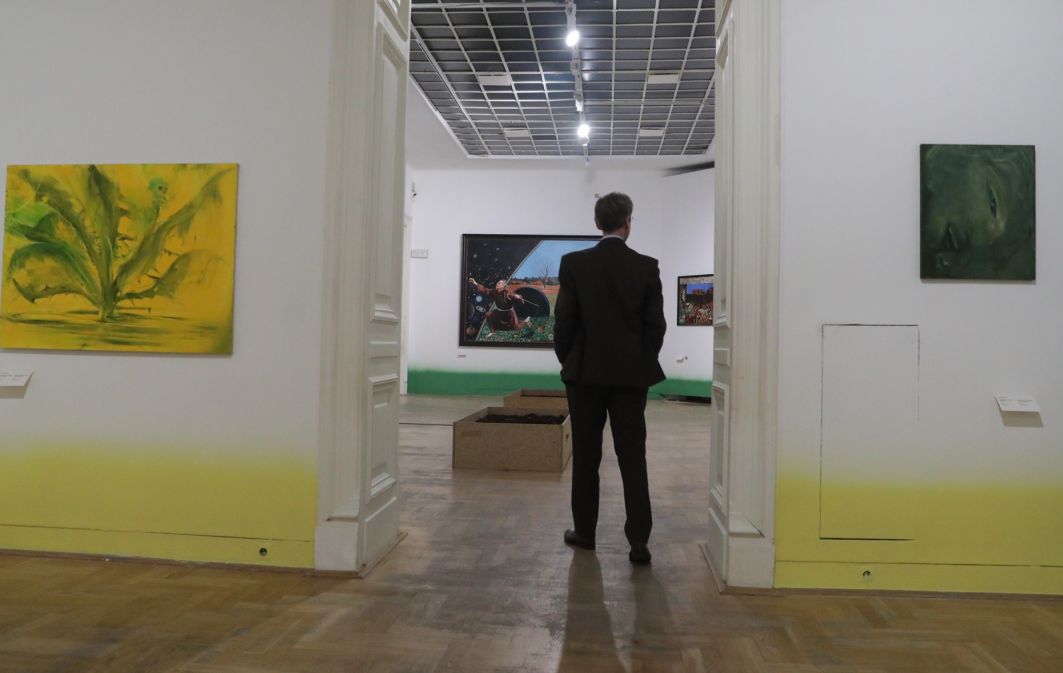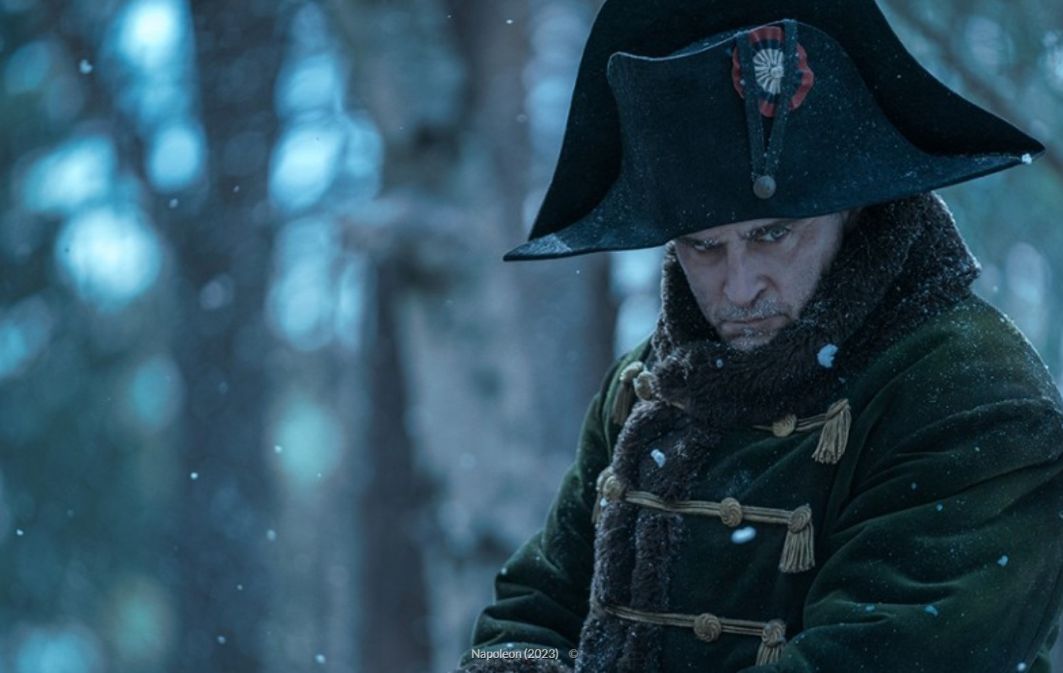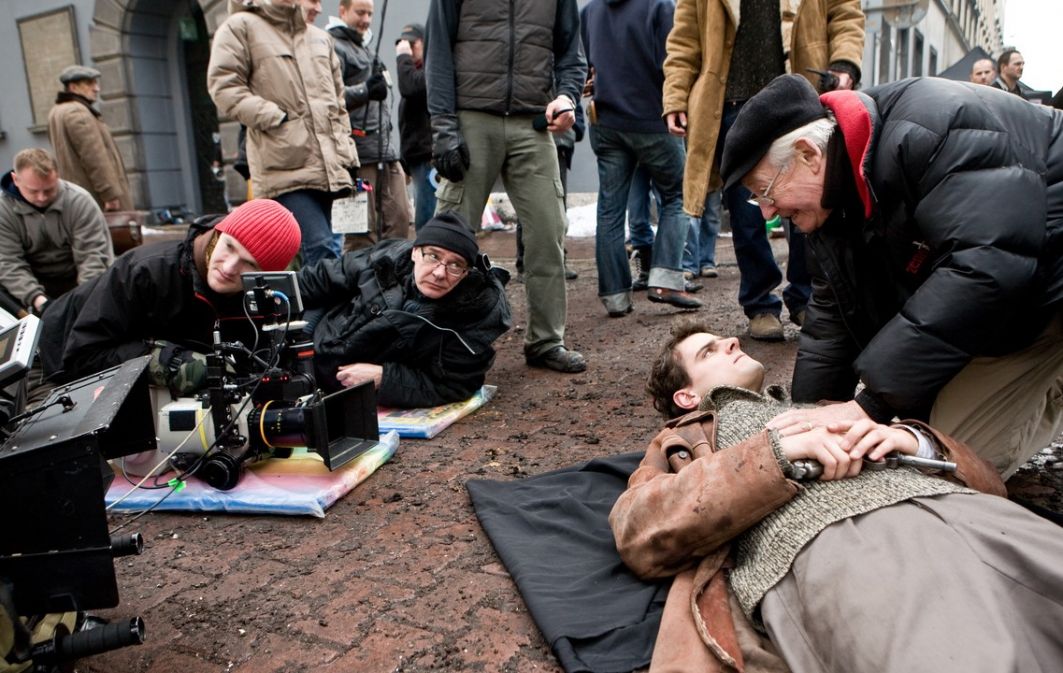Is There Still Room for Artists in the Church?
16.11.2022
Ten images of the Merciful Jesus will long worry, move and shake-up the faithful in churches (seven canvases have already been bought by parishes), critics and scoffers.
Of course, every vernissage (private preview of an art exhibition) has its laws, even one honored by the presence of bishops, rectors, superiors of religious orders and the metropolitan archbishop: it is always crowded, there is too much small-talk, critics in overlong scarves glance at the dazzling graduates of the Graphic Arts Department, lamps are shining, saucers clink, and some malcontent nags that the wine is not only weak, but that there also isn’t enough.
Ballet of habits
But on the other hand – at how many vernissages is the din reflected not from a suspended plasterboard ceiling, but from a 14th-century vault? Where the crowd can wander around the cloister, deciphering the epitaphs (“Look, you who stand here, whoever you see is right / a portrait of a Catholic as if living / Andrzej Gawronek rests here in his grave / he took a nice wife into his company…”) from February 3 of the year of Our Lord 1633? And where, standing off to the side a little, you can look not only at the purple of bishops and graduates, but above all, at the circling of the Dominican habits around the gray and black marble floor, as if it were a ballet with scenery arranged by M.C. Escher? “Glassy floor, black dress, white dress and hands.”
There was probably only one such vernissage in Poland this year if in any recent year. But long after the memory of the evening in the Dominican (OP) monastery in Krakow on Stolarska Street fades, ten images of the Merciful Jesus created by Polish painters, based on the visions contained in the Diary of St. Sister Faustyna Kowalska, will continue to worry, move and shake-up the faithful in churches (seven canvases have already been bought by the parishes of the Warsaw-Praga diocese), critics and scoffers.
The exceptionally “providential” motif has probably been re-painted the most, along with Our Lady of Częstochowa, or possibly “The Last Supper” by Leonardo da Vinci, which for years served as a standard First Communion gift. The most commonly known versions are those referring to Eugeniusz Kazimirowski’s painting, created in Vilnius on the basis of Sister Faustyna’s instructions in 1934 (although, as Dorota Lekka, an art historian and doctor of theology, proves, there are at least three widely known versions – apart from Kazimirowski’s, these are Adolf Hyła’s paintings from 1944 and Ludomir Śleńdziński’s from 1954, as well as countless other original attempts, variants and repaintings).
Ten Faces
This “Vilnian” Merciful Jesus is treated and often dismissed, surrounded by even deeper disdain than that with which many big city elites treat everything related to Catholicism: “some ‘Diary’, who reads it?”, they snort in editorial offices and institutions (answer: half the world). But also printed at times, commissioned by parish priests of new parishes almost as an “element of interior design”: “we’ll place the Merciful Jesus to the left of the altar.” It will be pink and blue, as if someone were buying jumpsuits for twins.
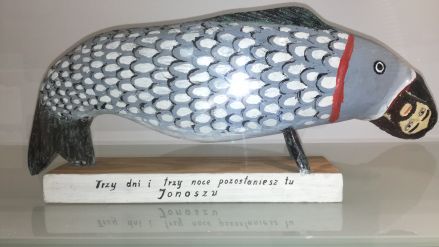
It is difficult to name a thinker, especially one at odds with orthodoxy, who would not use images and scenes from the Apocalypse.
see more
And yet, it is so important to make this effort, to overcome the nirvanic temptation, the belief that “the most beautiful object is / that which does not exist”! The history of sacred painting (at least in the Roman, Western version – icons are another matter) was, for millennia (which is forgotten today) a history of struggles: with convention, laziness and helplessness. It is an agon, not carried out with a club, but with a brush. Karpowicz is great on this again: “The splendor and misery of the great tradition of Western sacred painting… depends on the courage to climb with what is given – reason, faith, talent, imagination, accumulated experience and grace, Revelation and Tradition of course – but always at your own risk… There are no ready-made steps, chains, handrails or schools teaching the rules”.
Jarosław Modzelewski, Ignacy Czwartos, Beata Stankiewicz, Bogna Podbielska, Jacek Dłużewski, Wojciech Głogowski, Krzysztof Klimek, Jacek Hajnos OP, Wincenty Czwartos and Artur Wąsowski – attempted this climb. Ten images of Merciful Jesus stood in the monastery’s cloister in two rows opposite one other: large – two, sometimes almost three-meter high canvases, in niches like stalls. At their feet, after being uncovered – the set design by Michał Strachowski, a graphic artist associated with the Political Theology (Teologia Polityczna) community, deserves separate mention! – a ball of black material remained; you could say a shroud in the negative.
The enormous, very simplified, almost catacomb-like silhouette by Jarosław Modzelewski is like a huge wax candle. The solution to the issue of rays in Beata Stankiewicz’s painting is unusual (although fully in line with canon – “red like blood from the side of the blessing hand, pale as water from the side of the hand on the heart”!). Do I interpret correctly that the rays coming from the hand of God the Father are as from “The Creation of the World” by William Blake? (But this narrow navy blue, like from Edward Krasiński?).
“Merciful Jesus” by Jacek Dłużewski – the largest in size, with the least orthodox solution to the issue of rays and with a reference to the Manoppello Veil that moves everyone who notices it. The Jesus of Ignacy Czwartos – very “Czwartostic”, hieratic, a bit theatrically baroque, with an unusual contour of the wound on the hand (the wounds on these ten paintings deserve separate attention, their own book, someday) and rays almost like a bunch of icicles, unknown tools of the Passion, glass streams. Wojciech Głogowski’s Jesus – quiet, humble of heart, mysterious, modest and almond-eyed. Krzysztof Klimek’s Jesus – too pretty to my eyes, I can’t understand this painting game (but even on this canvas the wound, as small as a drop of blood, immediately attracts attention, luckily distracting from the overly stylized hair).
Frame in Prussian blue
Father Jacek Hajnos’ Jesus – the only acrylic, is impressive (or not too impressive?), in a Prussian blue frame, with the artist’s extraordinary intuition in terms of the source of brightness and light. The light that Bogna Podbielska also struggled with, her Jesus is opalescent, almost x-rayed, you can even see spots of light in the pupils – I would like to remember this vision, as well as the painting by Wincenty Czwartos: unreal, in a flower frame like from 17th-century Dutch still lifes; gray lilies and powder pink peonies fall around the canvas like in a procession. And the mandorla on Wąsowski’s canvas, a resonating mandorla like the vibrations of a bell.
This project is like light focused in a lens. The paintings were born at the initiative of the Political Theology community, from the courage of the artists. They evoke and renew the idea of Divine Mercy – perhaps the most important truth of faith shared with the world by the mystic from Vilnius (St. Faustyna Kowalska) and the Pope from Krakow. But we can also talk about the courage of the community that has undertaken a great initiative, with a disproportion of forces similar to that seen in David’s companions, a handful of fishermen, a few students of Franciszek or Albert in tattered habits: the renaissance of Catholic sacred painting.
Renaissance? Renaissance in painting? Renaissance of sacred painting? Today??
It’s hard to imagine an undertaking any more upstream against the currents of the times. Never mind all types of figurative painting, which, having long ago given way to post-structural performative installations, live out their days in antique shops, in the least frequented studios of the Academy of Fine Arts, with a handful of madmen who make a point of being anachronistic and with Old Town painters. Of much more importance is the defensive, which seems to include the sacred itself and all the institutions that would like to protect it, build it and propagate it: ridiculed, attacked and marginalized.
And sacred painting, sacred art? Things aren’t good for many reasons.
Contrary to appearances, those who declare themselves as such are not its greatest enemies. Anyway, there are different groups: there are the jeering ones (the greatest in number), full of naive faith that the world they dislike will collapse because of a fat monk they draw or a passionate kiss between a nun and priest on an advertising poster. They like rely on erotica as a sabotage tool (because in their deep conviction, which probably lacks some finesse, “the clergy is against sex”) – hence the countless variants of ploys such as Dominika Kulczyńska’s famous “c#nt-Marys” a few years ago.
Hate, hard and dark
There are many traditional motifs of sacred art, and even more organs located in the human pelvis, so in the coming years we can expect an abundance of recent-grads similar to Kulczyńska. We will probably see angels with fallopian trumpets instead of the Judgment trumpets, and the Lord’s saints stylized as porn stars with a straightforwardness that would have disillusioned Caravaggio: so what? There are graphic artists demonstrating hatred for the Church as hard and dark as Max Skorwider, a lecturer from Poznań and a popular illustrator for Polityka, and there are artists showing the despair and pollution of the world, from Aleksandra Waliszewska to the unsurpassed Francis Bacon.
All of them, although they might like to see themselves as accusers, are merely witnesses in a process that probably escapes their perception. Of course, these attitudes, translated into strategies of the single-voiced media, curators and academia, have their weight. However, they are not the cause of the crisis.
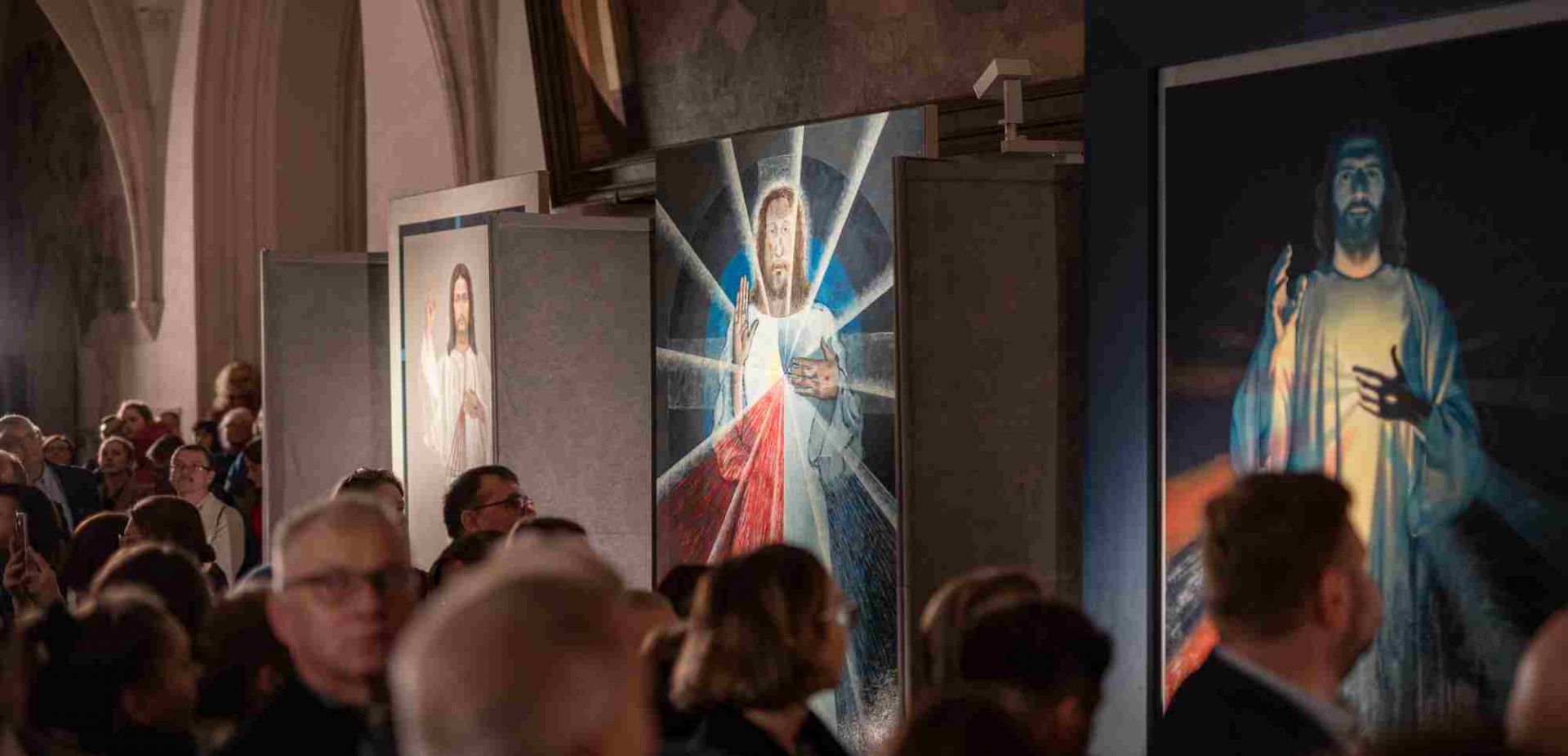
 SIGN UP TO OUR PAGE
SIGN UP TO OUR PAGE 

